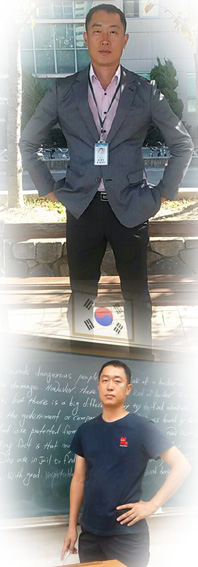2010년 수능 외국어 영역 41번 정답 및 해설 - 손범식
41. 다음 글의 제목으로 가장 적절한 것을 고르시오.
Young children rarely think of their art as personal property. Often they throw it away or give it away. This suggests that much of the value of art for a child consists in making it. Interestingly, art in tribal societies is frequently abandoned after it has served its purpose. The focus is on the magical, expressive, and social value of the act of making. Some contemporary artists share this feeling, but they are also caught up in the system of art exhibition, the selling of their art, and the requirements of an art market. This results in a tension in the art world that is largely unresolved ― the tension between art as a satisfying mode of __EXPRESSION__ and art as a precious collectible object, between the experience of making and the experience of owning.
① Art in Tribal Societies
② Conflicting Views on Art
③ Traditional vs. Contemporary Art
④ Using Art for Children’s Education
⑤ Modern Art Museums: Magical Places
1. 내용풀이
어린 아이들은 예술을 개인의 재산으로 여기지 않으며, 부족 사회에서는 목적 이후에 버려지며, 현대 예술가들은 예술과 관련된 부수적인 것들에도 관여되어 그것들 사이에 긴장이 야기된다는 내용의 글임. ‘② 예술에 대해 일치하지 않는 시각들’이 글의 제목으로 가장 적절함.
2. 구문해설
① [Young children rarely think of their art as personal property. Often they throw it away or give it away.] ※rarely:좀처럼~하지 않은(seldom, hardly, scarcely)  ※think of ⓐ as ⓑ = consider ⓐ as ⓑ = look upon ⓐ as ⓑ = regard ⓐ as ⓑ = refer to ⓐ as ⓑ: ⓐ를 ⓑ로 간주하다.
※think of ⓐ as ⓑ = consider ⓐ as ⓑ = look upon ⓐ as ⓑ = regard ⓐ as ⓑ = refer to ⓐ as ⓑ: ⓐ를 ⓑ로 간주하다.  ※throw it away(O), throw away it(X) ☞어린 아이들은 좀처럼 자신들의 예술을 개인의 재산으로 생각하지 않는다. 종종 그들은 그것을 버리거나 나누어 준다.
※throw it away(O), throw away it(X) ☞어린 아이들은 좀처럼 자신들의 예술을 개인의 재산으로 생각하지 않는다. 종종 그들은 그것을 버리거나 나누어 준다.
② [This suggests that much of the value of art for a child consists in making it.] ※much of the value of art:예술가치의 상당부분  ※consist in = lie in: ~있다, ~에 존재하다.
※consist in = lie in: ~있다, ~에 존재하다.  cf) consist of =be made up of = be composed of = comprise: ~으로 구성되다. ☞이것은 어린이에게 예술의 가치의 상당 부분은 그것을 만드는 데 있다는 것을 암시한다.
cf) consist of =be made up of = be composed of = comprise: ~으로 구성되다. ☞이것은 어린이에게 예술의 가치의 상당 부분은 그것을 만드는 데 있다는 것을 암시한다.
③ [Interestingly, art in tribal societies is frequently abandoned after it has served its purpose. The focus is on the magical, expressive, and social value of the act of making.] ※tribal society:부족사회  ※it has served its purpose:그것(art)이 그 목적(역할)을 다한 후에
※it has served its purpose:그것(art)이 그 목적(역할)을 다한 후에  →serve one's purpose:(목적에 맞게) 역할을 다하다. ※the act of making:만드는 행위 ☞흥미롭게도, 부족 사회의 예술은 그 목적을 이룬 후에는 자주 버려진다. 초점은 만드는 행위의 마술적, 표현적, 그리고 사회적 가치에 있다.
→serve one's purpose:(목적에 맞게) 역할을 다하다. ※the act of making:만드는 행위 ☞흥미롭게도, 부족 사회의 예술은 그 목적을 이룬 후에는 자주 버려진다. 초점은 만드는 행위의 마술적, 표현적, 그리고 사회적 가치에 있다.
④ [Some contemporary artists share this feeling, but they are also caught up in the system of art exhibition, the selling of their art, and the requirements of an art market.]  ※contemporary:동시대의, 현대의 cf)temporary:일시적인
※contemporary:동시대의, 현대의 cf)temporary:일시적인  ※be(get) caught up in: ~에 사로잡히다, ~에 휘말리다 ☞어떤 현대 예술가들은 이러한 감정을 공유하지만 그들은 또한 예술 전시회 시스템, 자신들의 예술 판매, 그리고 예술 시장의 요구에 말려들게 된다.
※be(get) caught up in: ~에 사로잡히다, ~에 휘말리다 ☞어떤 현대 예술가들은 이러한 감정을 공유하지만 그들은 또한 예술 전시회 시스템, 자신들의 예술 판매, 그리고 예술 시장의 요구에 말려들게 된다.
⑤ [This results in a tension in the art world that is largely unresolved ― the tension between art as a satisfying mode of __EXPRESSION__ and art as a precious collectible object, between the experience of making and the experience of owning.]  ※result in:결국~되다, ~을 초래하다. cf)result from:~로부터 기인하다, 유래하다. ※that:주격 관계대명사임.
※result in:결국~되다, ~을 초래하다. cf)result from:~로부터 기인하다, 유래하다. ※that:주격 관계대명사임.  ※between ⓐ and ⓑ 구문임에 유의 하세요 ※a satisfying mode of __EXPRESSION__:만족스런 표현양식 ※a precious collectible object:귀중한 수집가능 물건(수집가능한 귀중품) ※the experience of making:만드는 경험 ※the experience of owning:소유의 경험 ☞이것은 대부분 해결되지 않은 예술계의 긴장—만족을 주는 표현 방식으로서의 예술과 수집 가능한 귀중품으로서의 예술 간의 긴장, 만드는 경험과 소유하는 경험 간의 긴장—을 야기한다.
※between ⓐ and ⓑ 구문임에 유의 하세요 ※a satisfying mode of __EXPRESSION__:만족스런 표현양식 ※a precious collectible object:귀중한 수집가능 물건(수집가능한 귀중품) ※the experience of making:만드는 경험 ※the experience of owning:소유의 경험 ☞이것은 대부분 해결되지 않은 예술계의 긴장—만족을 주는 표현 방식으로서의 예술과 수집 가능한 귀중품으로서의 예술 간의 긴장, 만드는 경험과 소유하는 경험 간의 긴장—을 야기한다.
3. 단어정리
*rarely 좀처럼~하지 않은 *think of ⓐ as ⓑ = consider ⓐ as ⓑ = look upon ⓐ as ⓑ: ⓐ를 ⓑ로 간주하다. *property 재산 *give away (물건을) 거저 주다 *consist in ~ ~에 있다(consist of: ~으로 구성되다 = be made up of = be composed of) *tribal 부족의 *frequently 자주 *abandon 버리다, 포기하다 *serve 복무하다 *contemporary 동시대의, 현대의 *be caught up 말려들다 *exhibition 전시회 *unresolved 미해결의 *tension 긴장 *mode 방법, 양식 *precious 귀중한
4. 전문해석
어린 아이들은 좀처럼 자신들의 예술을 개인의 재산으로 생각하지 않는다. 종종 그들은 그것을 버리거나 나누어 준다. 이것은 어린이에게 예술의 가치의 상당 부분은 그것을 만드는 데 있다는 것을 암시한다. 흥미롭게도, 부족 사회의 예술은 그 목적을 이룬 후에는 자주 버려진다. 초점은 만드는 행위의 마술적, 표현적, 그리고 사회적 가치에 있다. 어떤 현대 예술가들은 이러한 감정을 공유하지만 그들은 또한 예술 전시회 시스템, 자신들의 예술 판매, 그리고 예술 시장의 요구에 말려들게 된다. 이것은 대부분 해결되지 않은 예술계의 긴장—만족을 주는 표현 방식으로서의 예술과 수집 가능한 귀중품으로서의 예술 간의 긴장, 만드는 경험과 소유하는 경험 간의 긴장—을 야기한다.
.gif)


.gif)

